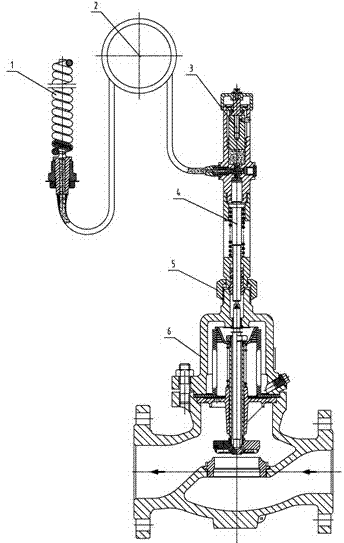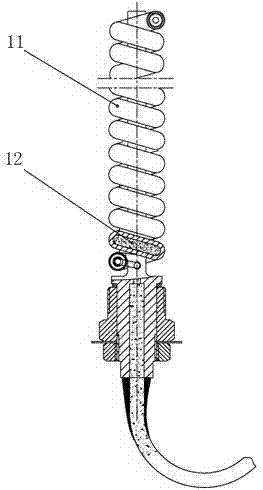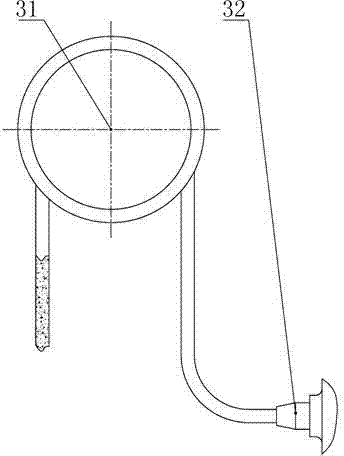Self-operated temperature regulator capable of regulating temperatures of fixed points
A technology for temperature regulator and temperature adjustment, which is applied in valve details, valve operation/release devices, valve lifts, etc. It can solve problems such as limited range of use, slow valve speed, and temperature control errors, so as to reduce temperature transfer links, The effect of increased adjustment accuracy and rapid response speed
- Summary
- Abstract
- Description
- Claims
- Application Information
AI Technical Summary
Problems solved by technology
Method used
Image
Examples
Embodiment Construction
[0053] The invention will be described in more detail hereinafter with reference to the accompanying drawings showing embodiments of the invention. However, this invention may be embodied in many different forms and should not be construed as limited to the embodiments set forth herein. Rather, these embodiments are provided so that this disclosure will be thorough and complete, and will fully convey the scope of the invention to those skilled in the art. In these drawings, the size and relative sizes of layers and regions may be exaggerated for clarity.
[0054] now refer to Figure 1-7 , The present invention provides a self-operated temperature regulator that can adjust the temperature at a fixed point, which is suitable for various controlled media such as non-corrosive liquid, gas and steam, and plays a role in temperature control in various heating systems. The self-operated thermostat capable of adjusting temperature at a fixed point includes a temperature sensing par...
PUM
 Login to View More
Login to View More Abstract
Description
Claims
Application Information
 Login to View More
Login to View More - R&D
- Intellectual Property
- Life Sciences
- Materials
- Tech Scout
- Unparalleled Data Quality
- Higher Quality Content
- 60% Fewer Hallucinations
Browse by: Latest US Patents, China's latest patents, Technical Efficacy Thesaurus, Application Domain, Technology Topic, Popular Technical Reports.
© 2025 PatSnap. All rights reserved.Legal|Privacy policy|Modern Slavery Act Transparency Statement|Sitemap|About US| Contact US: help@patsnap.com



